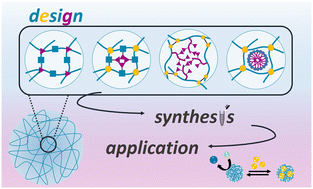Aqueous microgels with engineered hydrophobic nano-domains
Abstract
Microgels are smart polymer colloids that synergistically combine the properties of hard particles and soft macromolecules. Their diverse applications with specific requirements have led to the development of ever new, complex systems, e.g. by engineering of their polymer network structure. Microgels comprising an amphiphilic polymer network, i.e. domains of significantly different solubility, are particularly interesting as they can promote solubility and protection of hydrophobic substances in aqueous media, mediate between reactants in different solvent phases, and show an enhanced emulsification ability. Their superiority compared to hard hydrophobic particles or linear amphiphilic macromolecules is based on their deformability, tailored functionality, easy separation from solution, and responsiveness to environmental stimuli. The latter allows for e.g. triggered uptake and release, formation and separation of emulsions, or switching between (catalytically) active and inactive states. The specific focus of this minireview are amphiphilic compartmentalized microgels with engineered hydrophobic domains. Recent advances in synthesis approaches to control the chemical structure and morphology of such microgels are described and critically evaluated. We further highlight various applications of microgels with engineered hydrophobic domains as smart delivery systems, emulsifiers, catalyst carriers, scavengers, and sensors.



 Please wait while we load your content...
Please wait while we load your content...